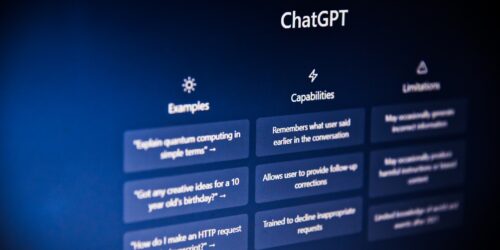The Optional Use of Generative Artificial Intelligence (GenAI) in Assessments
Are you considering giving students a limited or optional use of generative artificial intelligence (genAI) in completing an assessment in your course? Is knowledge of genAI required for workplace preparation in your industry? Do you want students to learn about the ethical and critical use of genAI platforms?
This post walks you through some of the questions you will need to consider in offering students the option to use genAI in completing an assessment in your course. The questions can be used to consider how you will provide students with your expectations in GenAI Assessment Statements for Students.
Two notes before getting started
- Experimental use of genAI in assessments (beyond Copilot) should be proposed to Conestoga’s AI Guidance Committee using the AI Experiment Form.
- For reasons of privacy and access, students should not be compelled to use external genAI platforms to demonstrate learning outcomes on an assessment. The use of external genAI platforms in assessment should be optional, and those students who cannot or choose not to access these technologies should have other options to complete the assessment.
A checklist of considerations for the optional use of genAI in assessment
1. What generative AI tools can be used in completing this assessment? For what purpose may students use them? (e.g., outlining, idea development)?
You may need to do research to identify relevant tools. To get started, consult the Hub post on “Generative AI Applications and Tools.”
2. What learning outcomes are being assessed? Could any of the learning outcomes be demonstrated and/or supported by a genAI tool? If so, how?
How will students use the genAI collaboratively to support or augment learning?
3. Is generative AI allowed or is it encouraged? To what extent?
Define and communicate parameters around acceptable use. The Hub post “Generative Artificial Intelligence (AI) Assessment Statements for Students” provides language that can be adapted to communicate student expectations.
Want to see an example? Consult Elan Paulson’s exemplar of statements on the optional use of genAI from a course she taught.
4. Why is generative AI use permitted in this assessment? Why is this change to the assessment being made?
Consider how genAI use on this assessment improves student learning. How will students benefit? What are the risks to students?
5. Where will assessment completion take place? In-person? Asynchronously?
Will genAI use necessitate a shift in the modality of assessment? Will the assessment remain accessible to all students?
6. How should students acknowledge their use of a genAI tool?
Guide students on citing appropriately in the assignment instructions. See thse posts for guidelines on citation and academic integrity:
- Academic Integrity and Assessment in the Age of Generative Artificial Intelligence (GenAI)
- Citing Generative Artificial Intelligence (GenAI)
- Describing AI Collaboration
7. Do grading tools require revision to reflect changes to the assessment? How will you communicate grading expectations to students?
What options are available for students who choose not to use the generative AI tool?
For example, if students are asked to respond to a genAI output critically, could the output be provided rather than having to generate it themselves? What other options can be built into the assessment to allow choice?
8. What are the repercussions if students use generative AI in an unauthorized way?
Given the parameters you have established and communicated, what constitutes inappropriate use of these technologies? For guidelines on academic offences and genAI use, consult the Hub post “Using Turnitin’s Artificial Intelligence (AI) Detection Tool and the Process Guide for Navigating Potential Academic Offences.”



